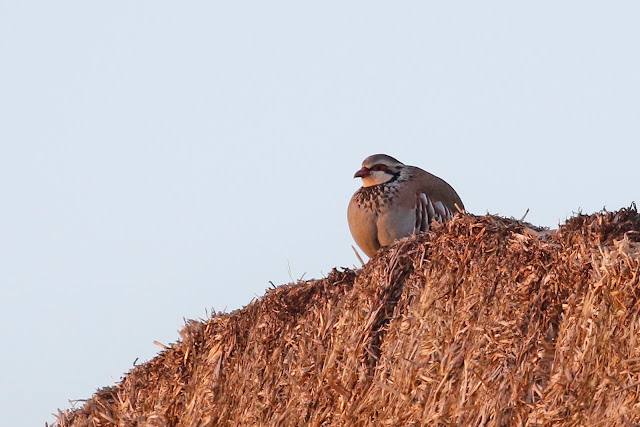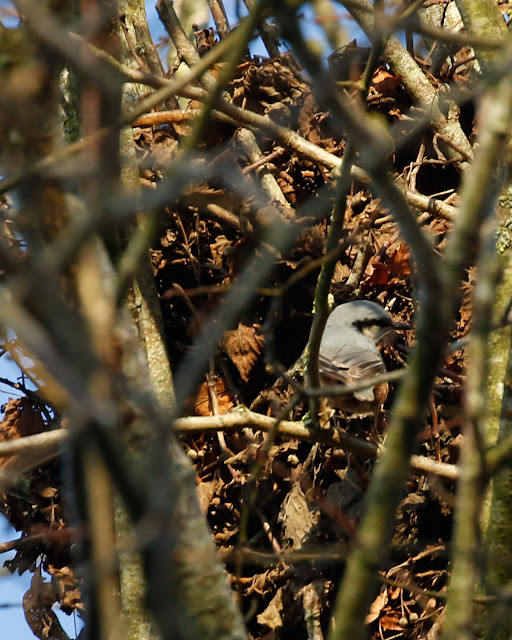We spent the weekend in Edinburgh, and arrived home in the drizzly rain that seemed to dominate the weather here at the weekend. Today though was once again spring like, and there was an overall sense that spring was not too far away and that the seasons were finally beginning to move on, but only with that nagging doubt that winter could grab back its time any day.
The sun had been out most of the day and it was quite frustrating sitting at work looking outside as Brimstone and Peacock flew past my office window. So when I arrived home Helen and I decided to go for a walk, and hopefully, if the paths were not too mudduy taking in Old Down Wood.
As I waited in the garden I noticed that the honeysuckle at the bottom of the garden had just started to come into leaf, and with the sunshine the leaves took on a golden glow.
Since last Thursday I have noticed that Lesser Celandines were in flower, passing them in the car or seeing them closed as I went for an early evening run. This afternoon was the first time I had come across them both open and in full bloom, and had a camera available.
The Lesser Celandine is a perennial member of the buttercup
family, it is widespread in woods, hedgerows and on the banks
of streams at this time of year and is a cheerful sight at the end of winter with its glossy buttercup like yellow flowers that will flower through March.
It was lovely to be outside and not worry too much about the temperature, although with it now late afternoon the sun was losing any strength. All along Brislands there was bird song. Blackbirds, Song Thrushes could be heard along with the ever present Robins, and supplemented now with Chaffinches and the wheezing, nasal call of the Greenfinch.
As we passed the Ash trees we heard a snippet of song not heard since September of last year and the earliest I can remember around here for a few years due to several cold March months. It was that of a Chiffchaff and was clearly high in the tree. After a short wait and search I located it amongst the tips of the branches.
It flitted about in amongst the branches, alternating between hovering as it searched for insects and delivering a short burst of song.
A hive of activity the head was continually turning in the search for food, but clearly the sunshine was convincing it to sing and it did so every so often, a clear statement of the change in the season.
We carried on along Brislands, passing the bank of conifers with Goldcrests singing away. The field to the south has been completely ploughed right up to the fence, and looked quite sterile. I had hoped for Skylark song along the lane but it was silent until I reached the trees where a sing male Blackbird was singing, but paused as we passed by.
As we walked into Old Down a Nuthatch called above us, and along path on either side we could hear Great, Blue and Long-tailed Tits singing.
The bottom of the path just before you enter the wood has always been a spot for a singing Song Thrush, and sure enough there was one there singing above us. I am certain this has not been the same bird over the last six years, probably the third to sing here, the longevity of life being in short supply for the song birds.
It was lovely to walk through the wood and hear bird song, for some time now the woods have a been sterile and silent place, but now new life was returning, and you could sense once again the turning of the year.
Around us buds were appearing, no more so than on the Willows.
What was a dull and dark floor to the wood was now being lit up by the warm sunshine, reflecting the greens of the moss, and picking out the orange brown of last years beech leaves that still clung to the fallen branches.
The path through the wood was still very muddy, and in places we had to take short detours to get past. The puddles though must have been quite deep as there was clumps of frogspawn that must have been laid in deep puddles, but now were drying out leaving just a mass of jelly and black pots.
This seems to have been a developing theme for the frogs, over the recent years I have noticed that they prefer to use the puddles in the wood, while hardly any frogspawn can be found at Swellinghill Pond.
As we walked towards the more open path heading towards Old Down Cottage a deep and throaty croak could be heard at the back of the wood. Then two large black birds appeared heading towards us. Both were ravens, and as they passed above us they continued to take turns to call to each other with a chuckling type croak, as if answering the other back. Unfortunately they flew above the trees and were completely obscured from the camera.
We left the woods and headed to the pond, as we approached a single Moorhen was on the far bank and the drake mallard was apparently on its own by the irises.
The thought that maybe the duck was on a nest somewhere was dispelled when she appeared and joined up with the drake. I still live in hope.
As suspected there was no sign of any frogspawn around the pond, but I did manage to find several Common Toads in the water by the jetty.
There was no spawn in the water, but one or two were "getting it on". The numbers of Toads spawning here has significantly reduced over the last few years, back in 2012 at this time of year the pond was "boiling" with toads, gradually over the years the numbers have decreased and since the warning signs went up, dropped considerably, is that just ironic?
As we left the pond a Great Spotted Woodpecker could be heard drumming, and another was heard to call. I managed to get a brief glimpse of the drummer, high in an oak tree before it flew off.
At this time of year with the trees still bare it is possible tee activity that goes unseen once the leaves appear. A Squirrel drey was very evident in the trees that line the field. The old beech leaves used to build the nest glowing a deep golden brown in the evening sunshine.
As we turned at Kitwood to head down towards the school, at least three Blackbirds were singing above us. Away to the west the sun was now setting quickly and the Old Down Wood Larches looked like they were a blaze.
Turning up Gradwell we were greeted with a similar picture, this time the golden sky and the dark clouds gathering behind one of the mature Oak Trees that stands alongside the edge of the field.
As we made the final steps back home with the sun now set the birds continued to sing, Song Thrush and Blackbirds from their high vantage points and the Robins from the side of the lane in the hedges.
As we came down Brislands a lone Lesser Black-baked gull lazily made its way above us, heading west, probably to a roost at Alresford or Avington.
Unfortunately the spring like sunshine is not going to last, although it should remain quite mild. By the end of the week we are due some unsettled weather which hopefully will not dampen opportunities to get out. For now though I will enjoy the start of spring, and hope that winter does not make a re-appearance.

















































